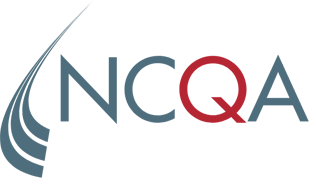The First Evaluation Option is for plans without existing NCQA Accreditation, and plans may, but are not required to report HEDIS/CAHPS until the third annual HEDIS reporting cycle. HEDIS/CAHPS reporting and scoring are required at the time of survey submission and annually thereafter for the Renewal Evaluation Option.
FAQ Directory
Here are some of the most frequently asked questions about NCQA’s various programs. If you don’t see what you are looking for in one of the entries below, you can ask a question through My NCQA.
Filter Results
- Save
Save your favorite pages and receive notifications whenever they’re updated.
You will be prompted to log in to your NCQA account.
Save your favorite pages and receive notifications whenever they’re updated.
You will be prompted to log in to your NCQA account.
- Email
Share this page with a friend or colleague by Email.
We do not share your information with third parties.
Share this page with a friend or colleague by Email.
We do not share your information with third parties.
- Print
Print this page.
Print this page.
8.15.2012 Evaluation Options: Basics How are the First Evaluation Option and the Renewal Evaluation Option different?
8.15.2012 Evaluation Options: Basics For which Evaluation Options are organizations eligible if their accreditation has expired?
A plan whose accreditation status has expired or has been withdrawn for less than two years is eligible for the Renewal Evaluation Option with a 24-month look-back period.
A plan whose accreditation expired more than two years ago is eligible for accreditation through the Interim Evaluation Option or First Evaluation Options with a six-month look-back period.
8.15.2012 Evaluation Options: Survey Process Will NCQA conduct onsite surveys (at the health plan) for the Interim Evaluation Option?
8.15.2012 Evaluation Options: Standards and Guidelines Where can plans get information about standards points, HEDIS/CAHPS points for accreditation and reporting categories points?
Plans can look in Appendix 1: Standards Points for 2013, in the 2013 Standards and Guidelines, for a summary table of approximate points for each Evaluation Option. Appendix 2: HEDIS and CAHPS Points contains a summary table for approximate points for HEDIS/CAHPS measures. Appendix 3: Points by Reporting Category contains a summary table of points by reporting category.
8.15.2012 Completely overturned denials excluded from file review Are overturned denials excluded from file review for only UM 9, Elements C and D, or from all elements in UM 9?
7.16.2012 Medical Record Review Validation How can we prepare for the changes listed in the MRRV memo?
Communicate timeline changes and processes to staff; to your network of providers; to leadership at your plan; to medical record and copy vendors; and to your software vendor. Develop a plan and prepare with adequate resources for the HEDIS season. Add HEDIS performance guarantees with vendors to ensure clear understanding of goals and timelines.
HEDIS 2013
7.16.2012 Medical Record Review Validation Why did the MRRV policy change?
NCQA continually reviews the audit process to ensure that it meets all applicable reporting requirements and is the rigorous process expected by all stakeholders.
Responding to increasing pressure from incentive programs, and with CMS input, over the past year NCQA developed the audit policy described in the June 19 MRRV memo. This change will make a more exacting process that ensures enough time for auditing and reporting valid results.
HEDIS 2013
7.16.2012 Initiation and Engagement of Alcohol and Other Drug DependenceTreatment In the Initiation of AOD Treatment indicator, the third paragraph states that if the Index Episode was an outpatient, intensive outpatient, partial hospitalization, detoxification or ED visit, the member must have an inpatient admission, outpatient visit, intensive outpatient encounter or partial hospitalization with an AOD diagnosis, within 14 days of the IESD (inclusive). What does "inclusive" mean?
"Inclusive" means the IESD is day 1 in the 14-day count for the Initiation of AOD Treatment indicator. The time frame for initiation is the IESD and the next 13 days, for a total of 14 days. For example, if a members IESD was an outpatient visit on August 1, the initiation visit must occur on or between August 1 through August 14.
HEDIS 2013
7.16.2012 Medical Record Review Validation Have the criteria for determining a unique medical record process changed?
No. If the MRR processwhich includes training, tools, interrater reliability checks, rater-to-standard tests and any other quality control processis different by plan, product or product line, the auditor must conduct separate MRRV for each process by following the new validation steps.
HEDIS 2013
7.16.2012 Initiation and Engagement of Alcohol and Other Drug DependenceTreatment The Engagement of AOD Treatment indicator requires initiation of AOD treatment and two or more inpatient admissions, outpatient visits, intensive outpatient encounters or partial hospitalizations with any AOD diagnosis within 30 days AFTER the date of the Initiation encounter (inclusive). Does "inclusive" mean that the initiation visit is included when determining compliance for engagement? What does "after" mean?
"Inclusive" means that the initiation visit is included when determining compliance for the Engagement of AOD Treatment indicator; therefore, the initiation visit is day 1 in the 30-day count. "After" means that the two additional visits must occur after the date of the initiation encounter. For example, if a members initiation visit occurred on August 1, the engagement visits must occur on August 2 through August 30.
HEDIS 2013
7.16.2012 Medical Record Review Validation Does the audit timeline have a new MRR completion date?
Yes. For HEDIS 2013, NCQA will enforce a medical record review deadline of May 15 (the previous deadline was May 10). No charts will be accepted past this deadline, when auditors will begin to review records. Holding all plans to the same timeline ensures comparability among submissions.
HEDIS 2013

